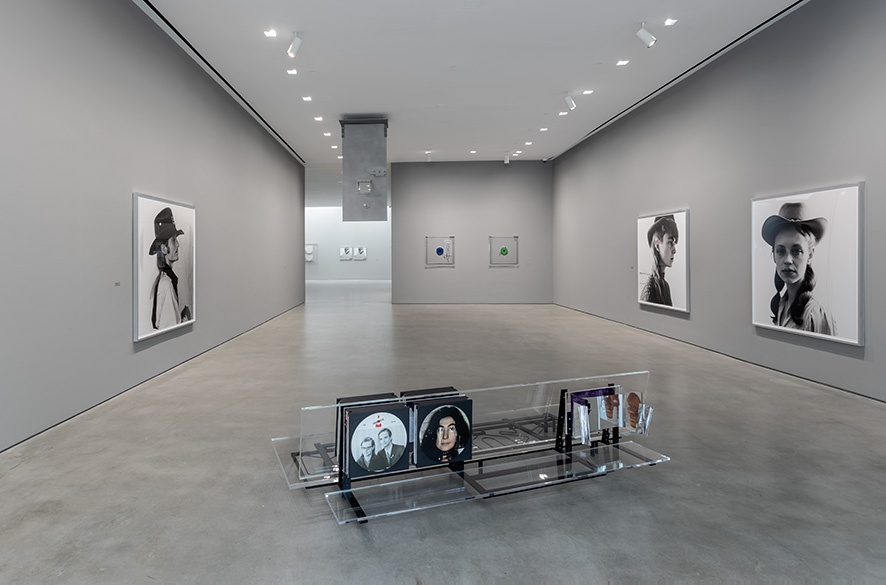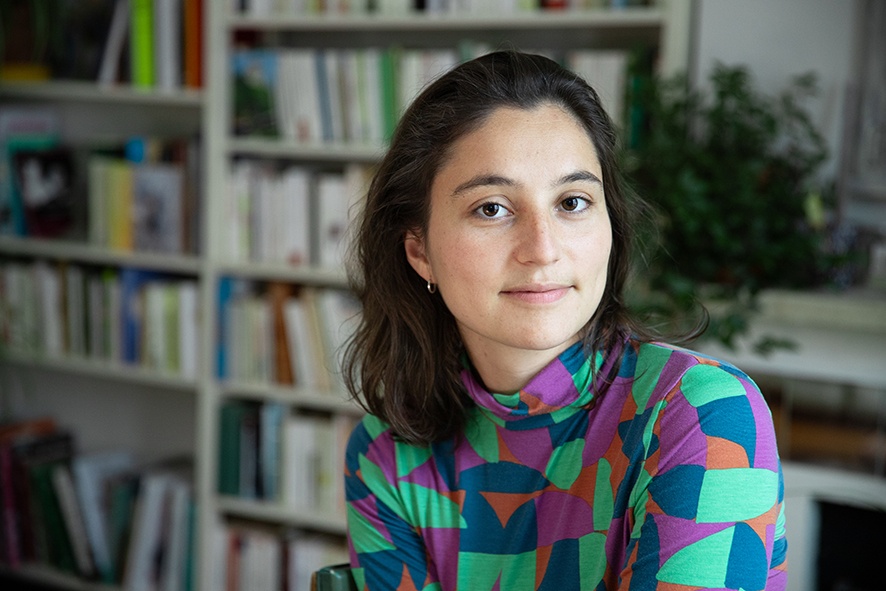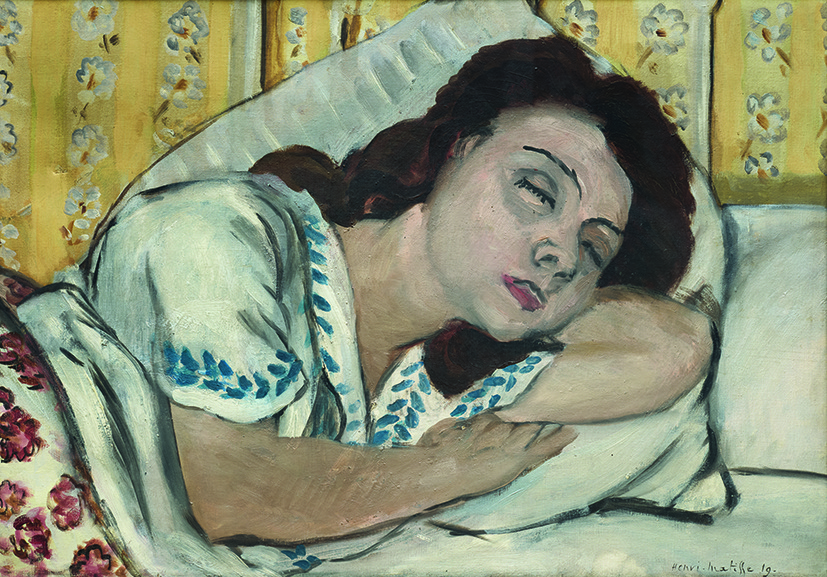For “The Kiss,” Rosemarie Trockel had both rooms of the Gladstone Gallery painted a gray dark enough to feel both oppressive and elegant. The shade mirrors that of the floor, transforming the gallery into a combination of somber Bolia-showroom ambience and the claustrophobic calm of a spa’s quiet zone; the dimmed lighting seems to arrest time, inviting visitors to linger even despite the eerie atmosphere. Installed on the walls, floor, and ceiling are objects that don’t deliver that which is usually expected of Trockel: colored knitted panels, stovetops, or glossy ceramics. (As a side note, the exhibition’s second section at Sprüth Magers’s New York gallery includes earlier works that due to space constraints I unfortunately can’t discuss here.) While the newer works at Gladstone certainly communicate with Trockel’s earlier motifs and processes in a latent fashion, their uniformly reduced palette – tones of black, white, and gray – renders them more abstract, apparently drained of a former vitality. Things are dominated by a solemn grisaille atmosphere that I find especially apposite in the current US context. In particular, the gray Duchamp-esque prison-cell door suspended from the ceiling, inclusive food flap (Bird’s Eye View, 2025), instantly invokes associations with environments of enclosure. This aluminum-cast door is a symbol of the US prison-industrial complex but also, more importantly, of the present threat posed by an administration that is subjecting people to arbitrary detentions and deportations. Like a guillotine, this cast readymade hangs above visitors’ heads, as if to remind them that the blade could strike anyone. The sculpture The Kiss (2025), another artistically reworked readymade and the source of the exhibition’s title, is likewise replete with aesthetic and sociopolitical allusions. Similarly cast in aluminum, two television screens here merge symbiotically, allowing them to be read as an allegory for the dark flipside of symbiotic relationships, previously hinted at by the two lovers teetering on the brink in Gustav Klimt’s Der Kuss (1908–09). At the sight of these merging screens, one can’t help but also think of the intimate relationships we maintain with our displays. When we gaze incessantly and enamored at, say, our phones, social reality passes us by. Kerfuffle (2024), in contrast, can be understood as an homage to climate activists’ analog museum protests; it features a wall object in white, with four round discs morphologically recalling Trockel’s stovetop motifs, in a Plexiglas box. But in that very Plexiglas box, there rests a black-and-white photograph depicting a paint-splattered climate activist being led away by a police officer before an Andy Warhol self-portrait. Though the art clearly came to no harm in the protest, the activist is treated like a terrorist. Also Gauge (2025) – a two-part, pale-gray painting with a seemingly lifeless surface – is akin to an abstraction of Trockel’s monochrome knitted pictures but forgoes their hints at vitality. In formal aesthetic terms, the exhibition is governed by the principle of doubling as repetition: In addition to the repetition and transformation of older visual languages, many works also appear in pairs – two panels, two screens, or two portraits of the same person. The repetitiveness of these doublings is, of course, implicit: Some of Trockel’s works seem principally to revolve around the time that passes through repetition. The ceramic piece Time Is Irresistible (2017) evokes a baroque mirror and demonstrates how, over time, one no longer recognizes oneself in its reflection. With its red hue, this earlier work seems to function as a pulsating heart amid the black-and-white pieces. The sense that time seems to press on ever more mercilessly as we grow older likewise resonates in Trockel’s sofa sculpture Bet Against Yourself (2005/2024), with its integrated ticking clock. In place of springs, this Plexiglas sofa also features heating elements from an oven, once again evoking Trockel’s stovetop objects. The sofa also functions as a display for a record collection – among the cover art of selected Kraftwerk and Yoko Ono discs, functioning here as integrated portraits, can be found another record cover designed by Andy Warhol in 1951 for “The Nation’s Nightmare,” a report on drug addiction and crime whose title very much resonates in today’s context. Once again, Trockel has succeeded in transferring personal preferences (Warhol) into a contemporary sociopolitical space of resonance. Her series Blind Mother (2023–25), portraits of young people that at first glance recall Wolfgang Tillmans’s photographic aesthetic, likewise seeks to bring the historical into the present day: The series is based on the artist’s earlier works, here transformed via AI into black-and-white portraits of avatar-like beings whose oscillation between lifelessness and vitality lends them an uncanny nature. Finally, two 2025 portraits titled Ally – both showing Trockel’s friend Andreas Osarek in profile with a bandaged ear – perfectly encapsulate what, for me, is at play in this exhibition: Again, the choice of black-and-white for these dark times, coupled with an aesthetic reminiscent of Man Ray, renders the depicted figure somehow abstract and lifeless. The motif is once again doubled, bringing the passing of time back into play, while this man with his injured ear can also be seen as a stand-in for Vincent van Gogh, and for all those enduring hardship in the present global context.
Gladstone Gallery, New York, May 7–August 1, 2025.





